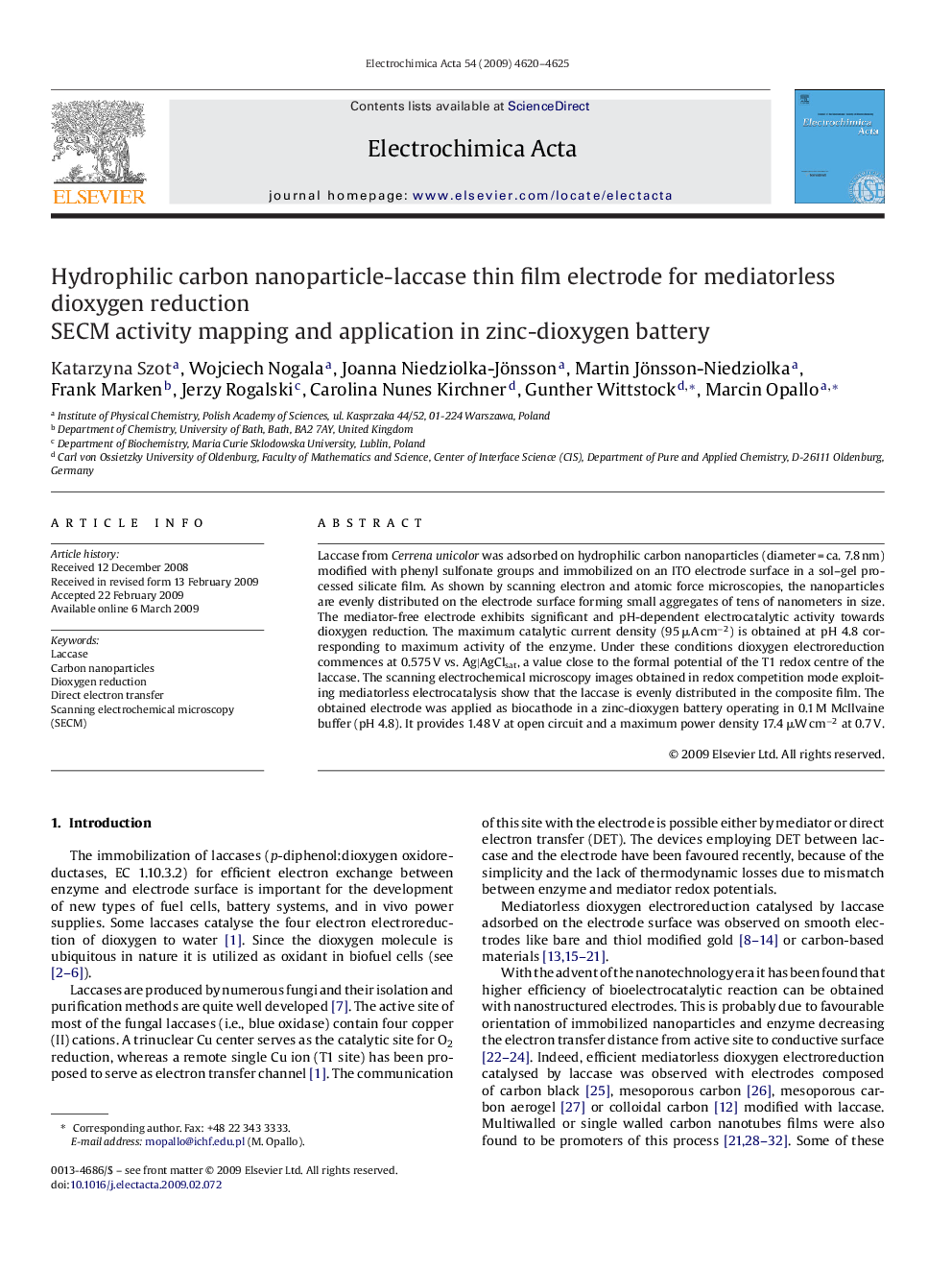| Article ID | Journal | Published Year | Pages | File Type |
|---|---|---|---|---|
| 191976 | Electrochimica Acta | 2009 | 6 Pages |
Laccase from Cerrena unicolor was adsorbed on hydrophilic carbon nanoparticles (diameter = ca. 7.8 nm) modified with phenyl sulfonate groups and immobilized on an ITO electrode surface in a sol–gel processed silicate film. As shown by scanning electron and atomic force microscopies, the nanoparticles are evenly distributed on the electrode surface forming small aggregates of tens of nanometers in size. The mediator-free electrode exhibits significant and pH-dependent electrocatalytic activity towards dioxygen reduction. The maximum catalytic current density (95 μA cm−2) is obtained at pH 4.8 corresponding to maximum activity of the enzyme. Under these conditions dioxygen electroreduction commences at 0.575 V vs. Ag|AgClsat, a value close to the formal potential of the T1 redox centre of the laccase. The scanning electrochemical microscopy images obtained in redox competition mode exploiting mediatorless electrocatalysis show that the laccase is evenly distributed in the composite film. The obtained electrode was applied as biocathode in a zinc-dioxygen battery operating in 0.1 M McIlvaine buffer (pH 4.8). It provides 1.48 V at open circuit and a maximum power density 17.4 μW cm−2 at 0.7 V.
